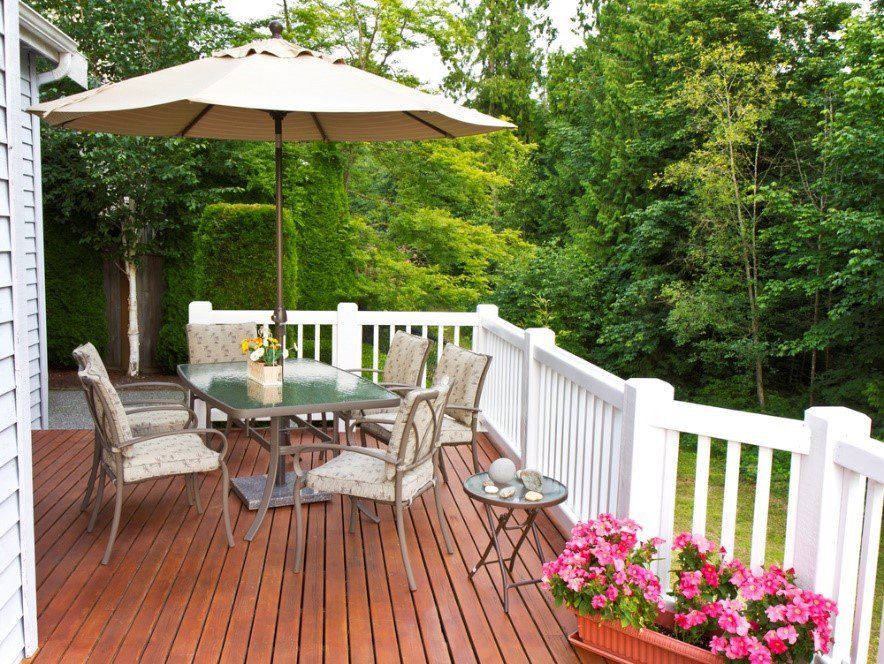How to Create a 4-Season Patio
Your patio likely sees a lot of use if you enjoy being outside, but it may also sit deserted during some seasons due to weather or temperature discomfort. Fortunately, you can make some changes to create the four-season patio of your dreams.
Patio Covers
You have a myriad of options when it comes to patio covers, so finding something to fit your home shouldn't be a challenge.
Awnings
An awning provides a versatile covering option. You have several types and materials to choose from, including fabric or metal awnings. As a bonus, awnings can also help lower temperatures inside the home, resulting in energy cost savings.
Retractable awnings are popular since you can put them away when you prefer a fully open air patio and pull them back out if you need sun or rain protection. Options are even available with remote sensors that retract the awning when it's not needed or if weather conditions make it necessary.
Metal awnings, on the other hand, are sturdier and can be used even if it is windy. The main drawback is that the awning cannot be put away for full open air use.
Canopies
Canopies can be used over any patio, but they are especially useful if you need a free-standing option that isn't connected to the house or another structure. Canopies are generally made from vinyl or fabric, but free-standing metal canopies are also an option.
Permits may be required to put up a canopy since parts of it, such as the support beams, may be considered a permanent load-bearing structure. Your installer can advise you on any special permitting that you need.
Enclosures
While an awning or canopy will protect you from rain and sun from above, it can't prevent sun or wind access from the sides. An enclosure solves this problem.
Patio Curtains
Curtains are a simple and cost effective choice that works well if sun and wind exposure are limited. Patio curtains are made from weather-resistant fabric that isn't prone to mildew, mold, or sun fading.
The curtains connect to a track around the perimeter of the patio, so you can easily open and close them at will. You need a fixed awning or canopy to install curtains since a permanent framework is necessary for the track.
Screens
Screens provide a more sturdy enclosure. You can choose screens that specifically block wind, insects, or UV light. You can even pick combination screens that do some or all of the above.
When you look at screens, determine how much convenience you are willing to pay for. Fixed screens that must be manually removed can be more cost effective than fully automated versions that can be open and closed with the push of a button. The main drawback of manual versions is that you have to remove the screens and find a place to store them whenever you want to open up the patio.
Temperature Control
You may be protected from the elements, but temperature extremes can still render a patio useless. Fortunately, you have options outdoor temperature control as well.
Cooling Options
It can feel hot and stuffy under an awning or in an enclosed patio. A fan to move the air will help.
Free-standing fans are the best option for fabric and retractable awnings. If you have a fixed metal awning or a canopy with roof supports, you can opt for an overhead ceiling fan installation.
Heating Techniques
Outdoor heaters are the standard for creating small pools of warmth on a patio. For most awning or canopy covered patios, the free-standing heater is the safer choice, although some wall-mounted types can also be used.
If you plan to have the patio enclosed when the heater is in use, opt for an electric version. Propane heaters are only suitable if you will have the screens open, since carbon monoxide poisoning is a risk in an enclosed space.
Contact
Lexington Tent & Awning Company for help creating the patio of your dreams.
122 Eisenhower Ct., Nicholasville, KY 40356
- Mon - Fri
- -
- Sat - Sun
- Closed






